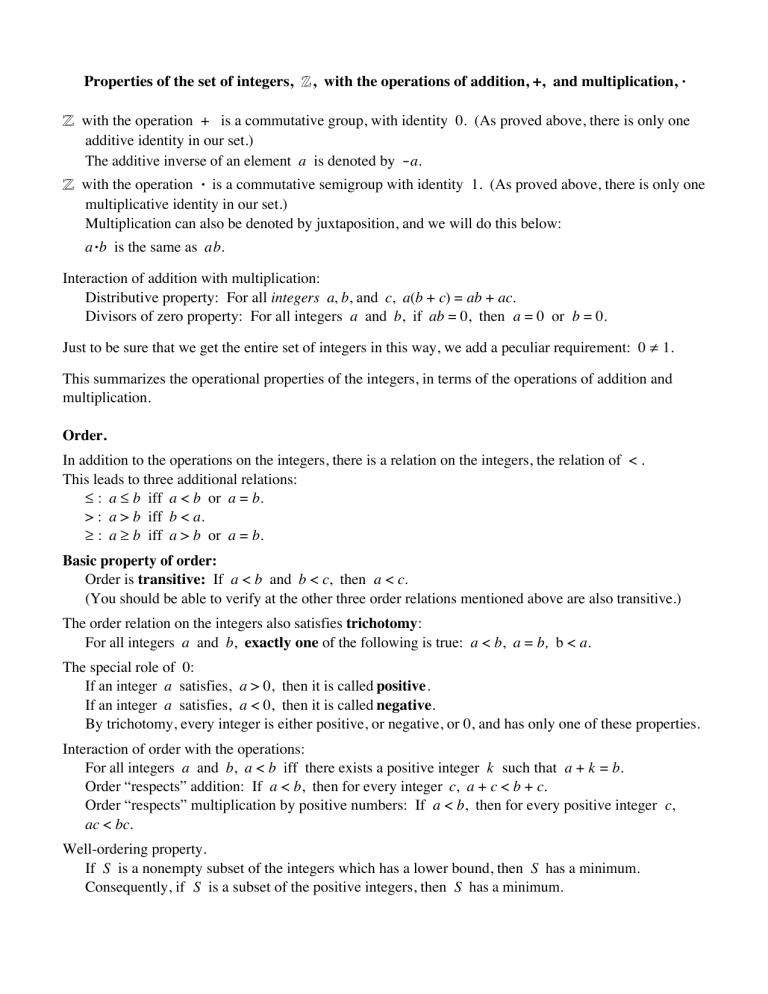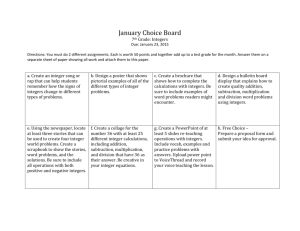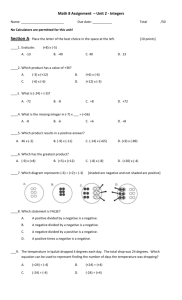Properties of the set of integers, Z, with the operations of addition, +

Properties of the set of integers, Z, with the operations of addition, +, and multiplication,
.
Z with the operation + is a commutative group, with identity 0. (As proved above, there is only one additive identity in our set.)
The additive inverse of an element a is denoted by a .
Z with the operation
.
is a commutative semigroup with identity 1. (As proved above, there is only one multiplicative identity in our set.)
Multiplication can also be denoted by juxtaposition, and we will do this below: a
.
b is the same as ab .
Interaction of addition with multiplication:
Distributive property: For all integers a , b , and c , a ( b + c ) = ab + ac .
Divisors of zero property: For all integers a and b , if ab = 0, then a = 0 or b = 0.
Just to be sure that we get the entire set of integers in this way, we add a peculiar requirement: 0
!
1.
This summarizes the operational properties of the integers, in terms of the operations of addition and multiplication.
Order.
In addition to the operations on the integers, there is a relation on the integers, the relation of < .
This leads to three additional relations:
"
: a
" b iff a < b or a = b .
> : a > b iff b < a .
#
: a
# b iff a > b or a = b .
Basic property of order:
Order is transitive: If a < b and b < c , then a < c .
(You should be able to verify at the other three order relations mentioned above are also transitive.)
The order relation on the integers also satisfies trichotomy :
For all integers a and b , exactly one of the following is true: a < b , a = b, b < a .
The special role of 0:
If an integer a satisfies, a > 0, then it is called positive .
If an integer a satisfies, a < 0, then it is called negative .
By trichotomy, every integer is either positive, or negative, or 0, and has only one of these properties.
Interaction of order with the operations:
For all integers a and b , a < b iff there exists a positive integer k such that a + k = b .
Order “respects” addition: If a < b , then for every integer c , a + c < b + c .
Order “respects” multiplication by positive numbers: If a < b , then for every positive integer c , ac < bc .
Well-ordering property.
If S is a nonempty subset of the integers which has a lower bound, then S has a minimum.
Consequently, if S is a subset of the positive integers, then S has a minimum.







